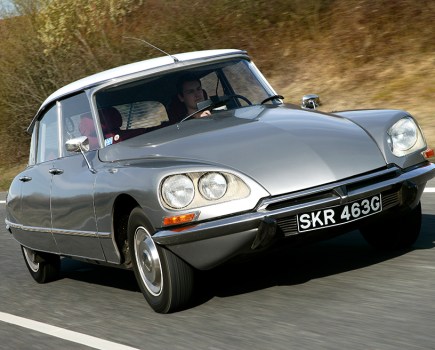The technical definition of a torsion bar is esentially that of a solid element’s resistance to a twisting motion and that translates in the automotive world to a length of steel that is used as a spring by mounting it rigidly to the car’s chassis or bodywork and attaching the road wheel to the other end in such a way that the vertical movement of the wheel over bumps in the road twists the metal bar. The stronger the bar’s resistance to twisting (torsion) the stronger the springing effect.
Torsion bar suspension was first used in production cars in the ‘Thirties, notably by Porsche in his People’s Car, although it was later admitted that the concept had been cribbed from Tatra. Its basic advantages are its innate simplicity and durability, coupled with a lack of moving parts – the torsion bar itself is less fragile than a coil or leaf spring and the suspension design can be very simple indeed, as the wheel moves only in one plane.
It’s also often suggested that torsion bar suspension is more space efficient but that rather depends on the design of the installation. In the VW Beetle for example, a transverse set-up is used with a hefty suspension beam that houses the torsion bars running the width of the car. This is possible because of the lack of an engine up front, but it does rob the front boot of a lot of space – and in fact the later Beetles with the MacPherson strut front end offered significantly more luggage space. On the other hand, torsion bar suspension was used for the MGC but using a longitudinal design that actually freed up more space in the engine bay than the coil and wishbone set-up of the MGB.
A variation of the torsion bar suspension is also commonly found under the rear end of front-drive hatchbacks in the form of the twist beam or torsion beam axle. In this installation the rear wheels are carried by trailing arms that are linked across the car by a beam acting as a torsion bar. The weight of the car is actually carried by separate coil springs but this torsion bar can twist, allowing the two rear wheels to move independently of one another to some extent. It’s not as effective as a proper independent rear suspension set-up but it does offer some of its advantages and compared to a fully independent design takes up very little space. Most of the assembly can be carried below the floor and due to the relatively small amount of wheel travel, it requires similarly small spring and damper assemblies. This also explains the early Golf’s habit of lifting an inside rear wheel under hard cornering.
This doesn’t always hold true though; in the case of the Renault 16, the rear end was supported by straightforward torsion bar suspension without any additional springing at all. The system worked well to give the car a typically supple French ride, but in order to achieve the required spring rates the torsion bars themselves needed to be pretty long– the width of the car in fact, which was why they were housed one in front of the other. The result was that the car famously had a different wheelbase on each side by some 7cm.
More recently, despite the cost advantages and simplicity of the twist beam rear axle, more mid-range hatchbacks are adopting a fully independent set-up. The trend was pioneered by Ford with the original Focus in 1999 and has since been adopted by VW for the MkV Golf amongst others. Although it adds to the production cost, its advantages include being able to tailor the rear suspension geometry characteristics, such as camber and toe changes precisely, as well as being a true independent set-up. It also allows fancy twin centre-exit exhausts to be more easily fitted…




